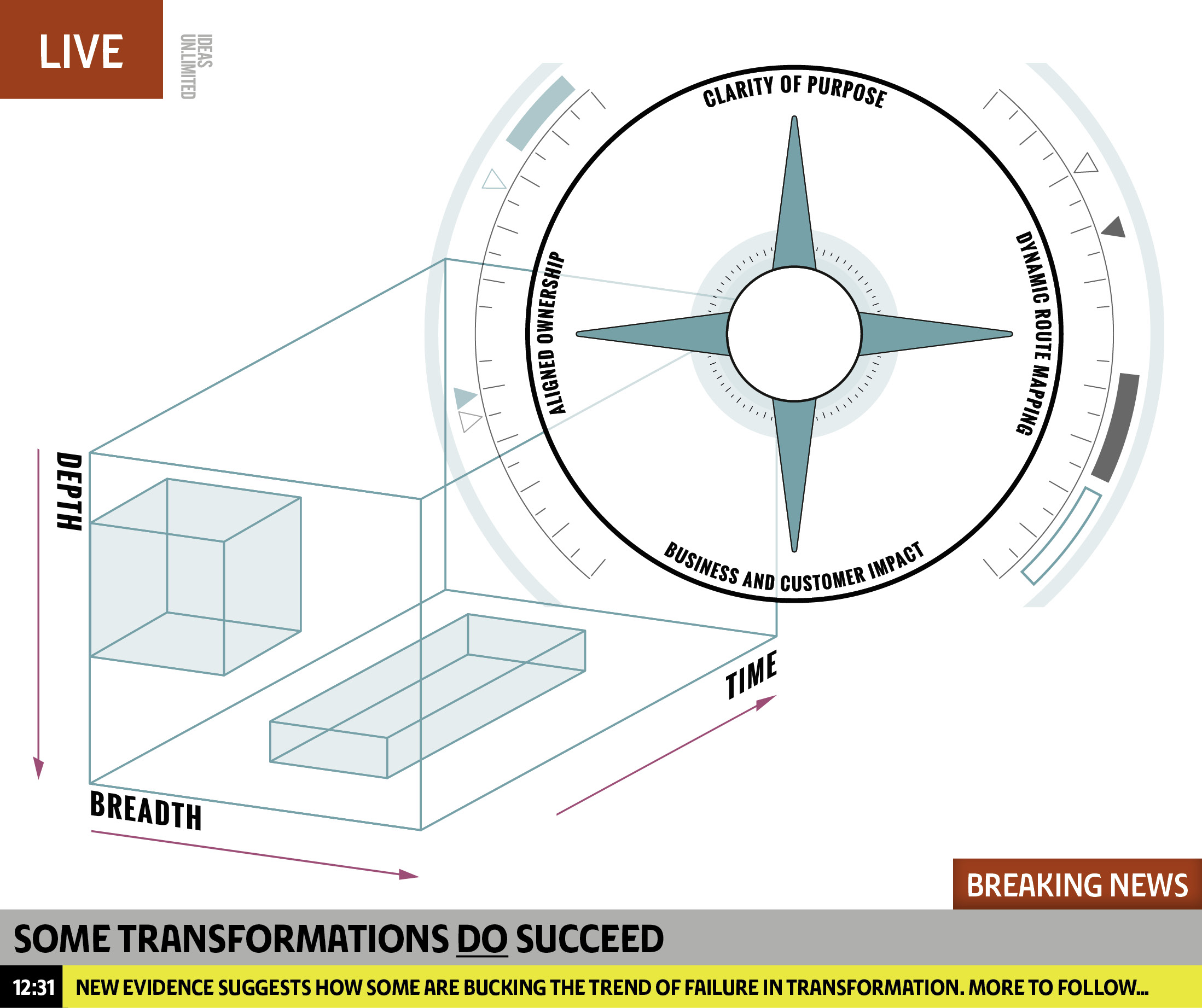Some transformations DO succeed
Much of our work in the last year has been supporting clients to deliver transformation (there’s a lot of it about). Reviewing what’s working around leadership and transformation with organisations as diverse as Aviva, Bayer, Deloitte, HMRC, Marks and Spencer, NatWest and Yorkshire Water, a striking and useful pattern emerges.
Those making most progress in transformation are doing three things:
- ACHIEVING COHERENCE IN TRANSFORMATION AIMS AND ACTIVITY
Transformation means changing from one thing into another (you can’t have a bit of a transformation). Each transformation requires a particular depth of impact across a particular breadth of the organisation and will take a certain amount of time: success depends on embracing the entire scope these three dimensions demand. Multiple streams of activity are inevitable but must be integrated: the cost of fragmentation is inefficiency and often failure. Even with a clear purpose, absolute coherence is rarely achieved at the outset but needs building and maintaining throughout.
- MANAGING THE TENSION BETWEEN COMPETING NEEDS
Fundamental change in a complex system throws up competing demands and commitments. The needs of the short-term and the long-term; of BAU and future business; of stakeholder A and stakeholder B; of pace and assurance etc etc. Successful transformers recognise that these dynamics need attending to. They understand that some tensions can and need to be resolved (at least to a degree), while others can’t or don’t. And, resisting the cop-out that tensions are inevitable and unresolvable (a common defence against the hard work of deep thought and careful negotiation), they lean in and do the work.
- MONITORING THE HEALTH OF THE TRANSFORMATION PROCESS
It’s tempting to imagine your gantt chart and outcome measures tell you all you need to know about your transformation progress. But what do they tell you about the effectiveness of your transformation process and your capacity to transform? How well, for example, you are achieving the coherence or managing the tensions described above? Or prioritising? Or building ownership? Or course correcting? Those leading successful transformations know, because they identify the necessary conditions and monitor the extent to which these are being created and maintained (some with the help of our Transformation Compass).
There’s a common thread here about attending to the macro as well as the micro – to the integrity of the whole transformation (and organisation and system) as well as to the progress of its disparate and delegated parts.
Leaders may focus on the micro because it’s, literally, more manageable but we need to take care we’re not avoiding complexity and uncertainty – or denying any other aspect of what it takes to transform. As we evaluate the health of our transformation process we might usefully ask ourselves, ‘What are we coming up against here: the organisation’s capacity to transform, or our own?’



